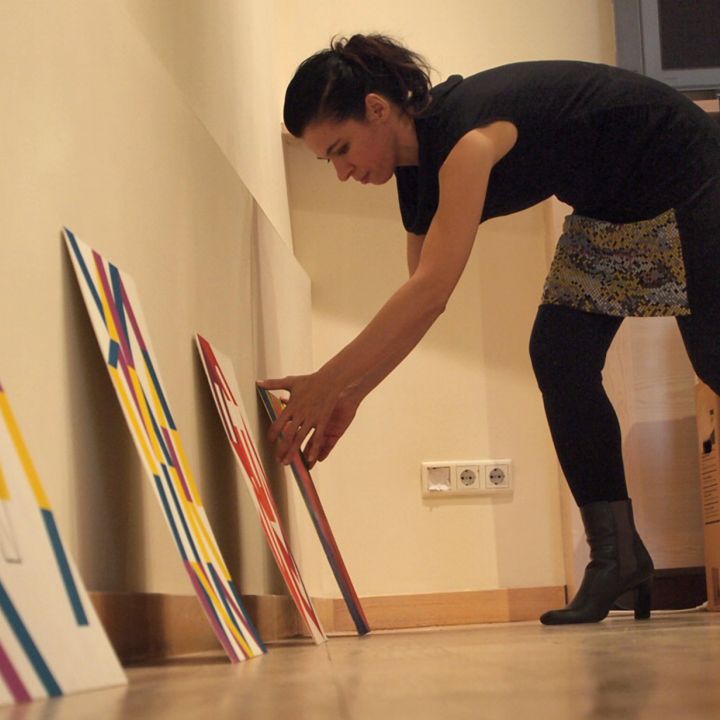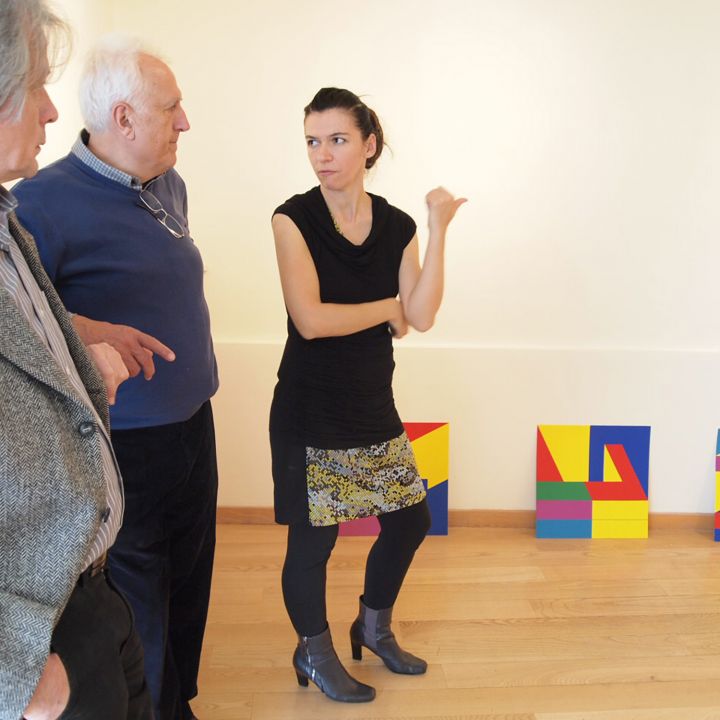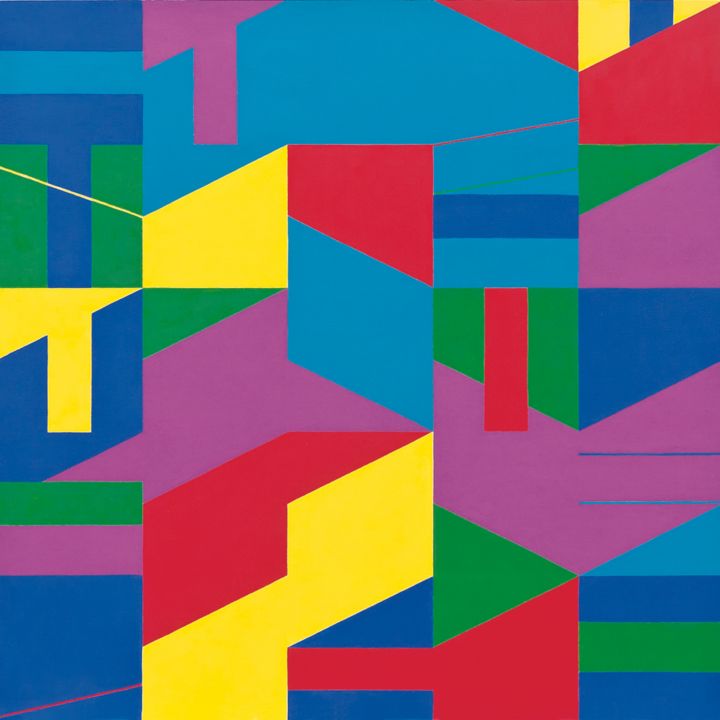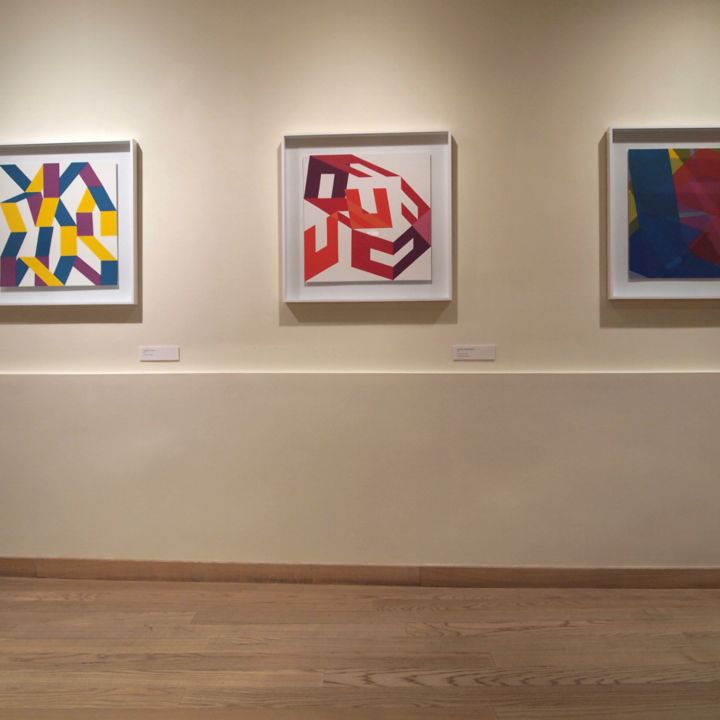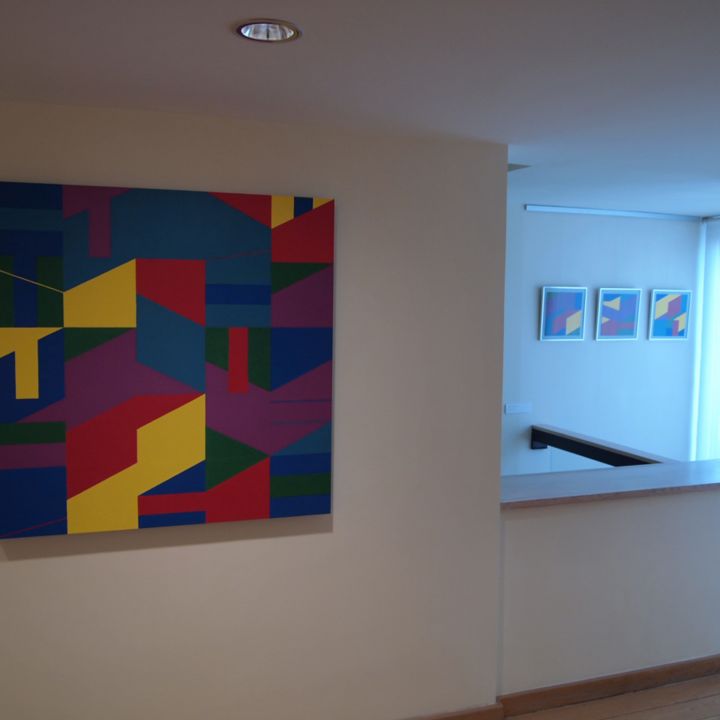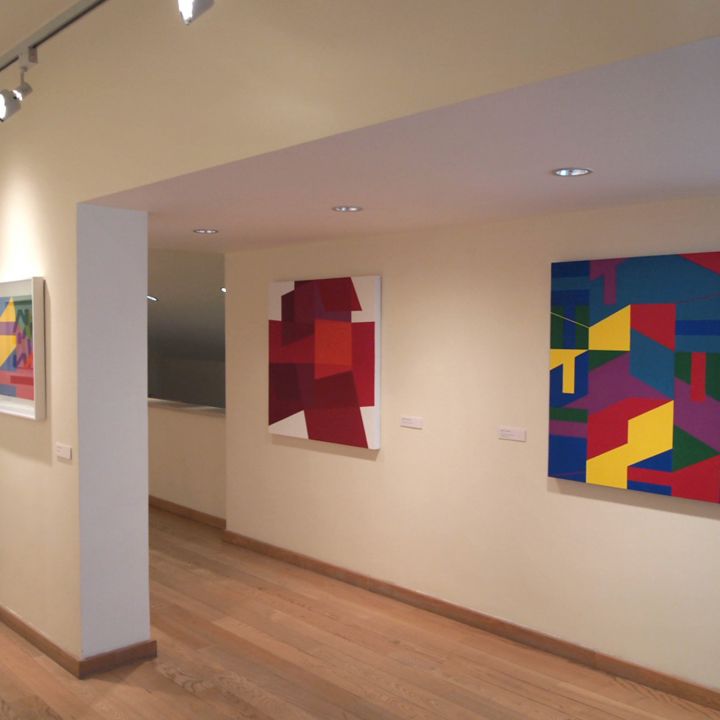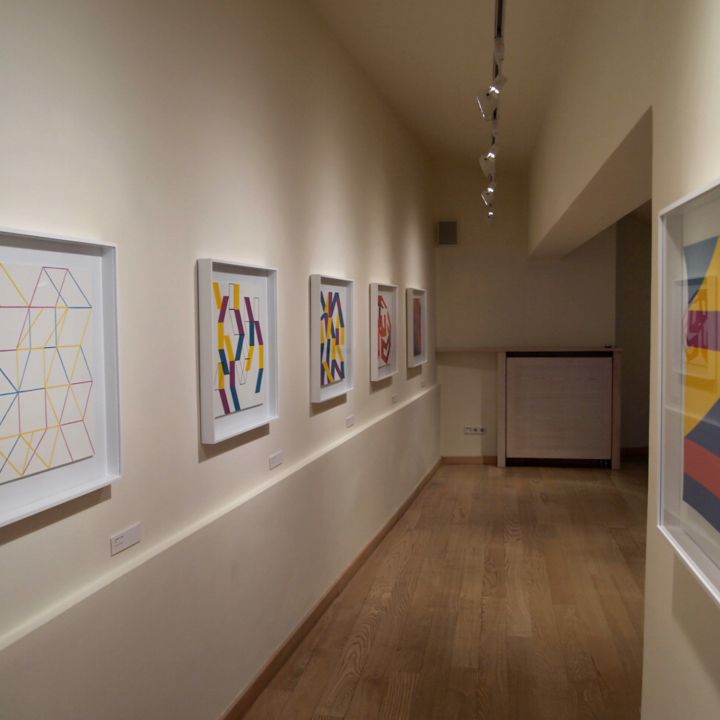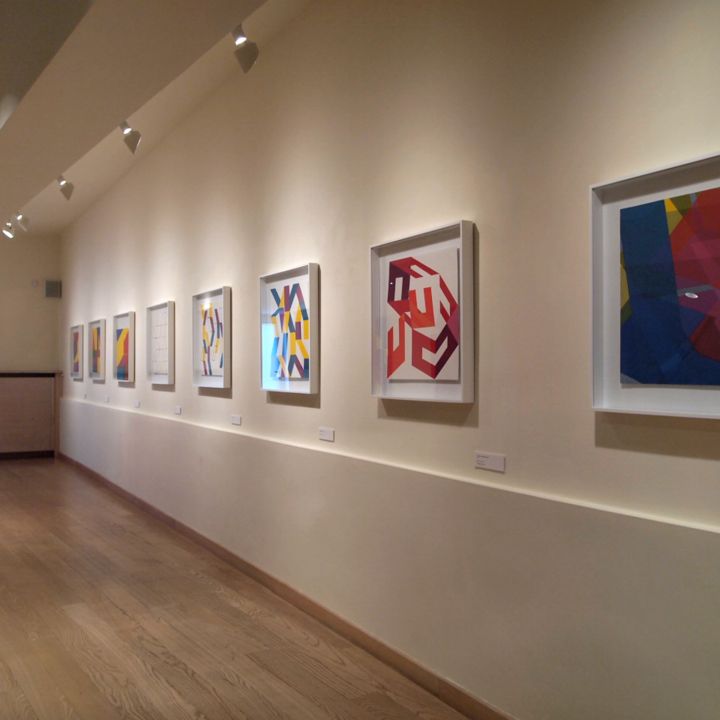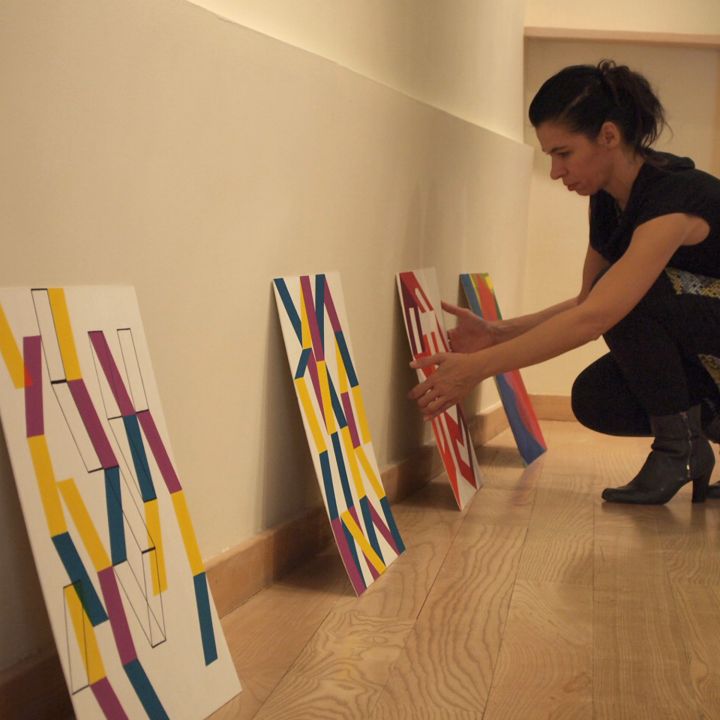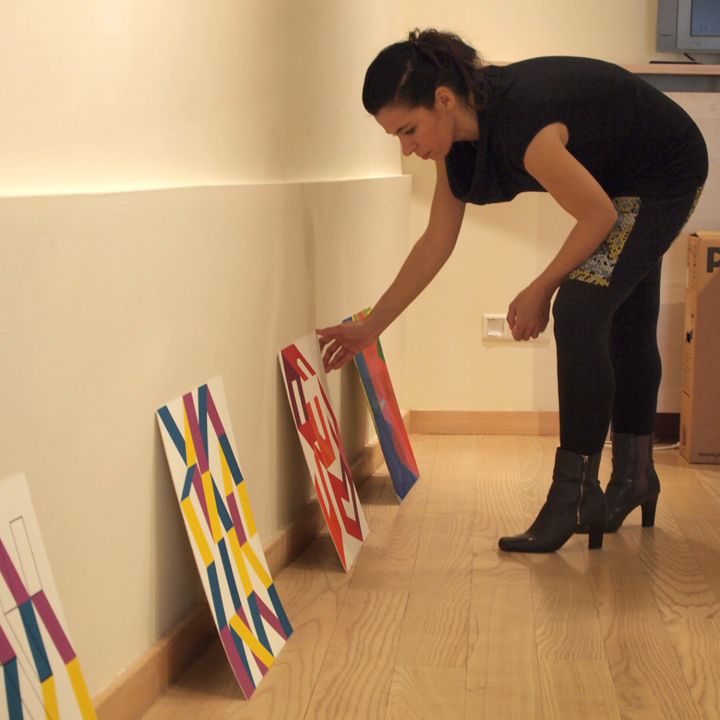In 1978, Marcia Hafif's study, Starting Over led painters to different conclusions. One of the basic motif hunters is Kati Vilim, who creates her works in the spirit of postgeometry. They set about re-thinking the basic elements of their medium with incredible intensity, although they had already done so a few times since the beginning of abstract art and have gone through the process several times since this study.
In Vilim Kati's work the "principle of family resemblance" (Ludwig Wittgenstein) is the construction of a work with few means, a single main motif, a visually reduced language. At the same time this reduction gives special emphasis to the remaining elements of painting, such as colours, shapes, proportions, structures and in her work especially the layering of planes. In addition, the planes although painted separately create an illusion of transparency, which is enhanced by her particular painting technique, the surfaces created by additive colour mixing. This creates spaces and depths of their own within the two dimensions, making the geometric scheme much more complex than it first appears. This false impression is also due to the fact that this transparency softens the geometric forms, transforming sharp angles into an almost aerial form. This effect is at its most pronounced in the paintings Proposition and Red and White. Moreover, the serene use of colour enhances the illusion of this lightness. Geometric works are usually serious and static, but in the case of Kati Vilim neither of these adjectives is true, for even scientific knowledge of colour theory is presented in a light form and her paintings are distinctly dynamic, thus setting space in motion. This spatial thinking is also reflected in the titles of the paintings, such as Shifting Space, Space Plane and Element of Space.
Despite the lack of narration the transparency and the rhythm of the colours and shapes soften the geometric abstraction, making it personal and what is more, almost emotional. Although the role of rhythm was already dominant in Kandinsky's art from the very beginning, it will always play a prominent role in paintings stripped of narration, especially as this type of painting has a very close affinity with music, which essentially dispenses with narration. The role of rhythm is decisive not only within each painting, but also in the relationship of the paintings to each other, as the changing dimensions create a playfulness in the installed space. And although Kandinsky and beginnings are inescapable when discussing abstract art, Kati Vilim's paintings are as much about the present as they are about a dialogue with the past. You don't have to be a technical expert to see the effects of digital culture, the visual world, the colour resolution effects, the computer's image constructions in these images. In fact, the very airiness of her works, which create the illusion of transparency makes them seem more like images of the virtual world than traditional oil on canvas paintings. This is of course helped by the fact that she is also linked to the technique in terms of colour, working with two sets of primary colours, RGB and CMY.
In Kati Vilim's paintings we find the last century's thinking about the image from the stripped-down Kandinskyan view to the computer-generated view. Through abstraction the emphasis is strongly placed on exploring the inner qualities of things beyond the external view."
Andrea Bordács

